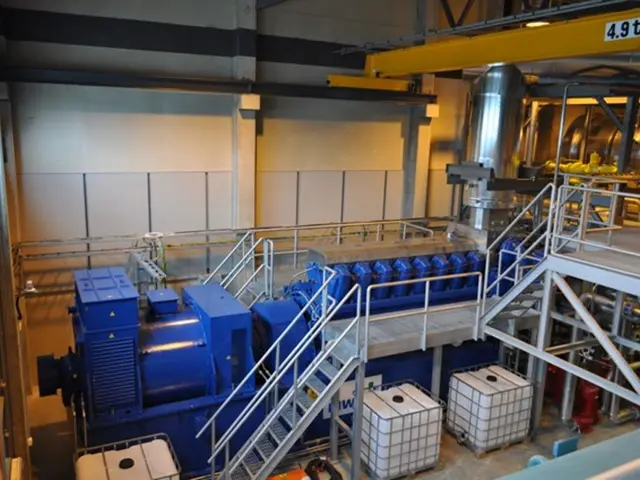Investigation of Public Opinion or Analysis of Local Populace
Community assessments, also known as needs assessments, are essential processes for understanding the strengths, assets, needs, and challenges of a specified community. This guide provides a systematic approach to conducting a community assessment, drawing on resources from various institutions.
Preparation
Before embarking on a community assessment, it's crucial to prepare a timeline and budget, identify community partners, and explain why the assessment is being conducted. Residents are considered the best experts on their own community, so involving them in the self-assessment of their resources and identifying the health issues they believe are most important to address is essential.
Data Collection
A successful community assessment employs a combination of quantitative and qualitative methods, such as surveys, interviews, focus groups, and observations, to capture diverse community insights. When conducting surveys, it's essential to define clear objectives, develop a representative sampling strategy, and recruit and train interviewers to ensure data quality. Observation methods allow the collection of naturalistic data on behaviors and conditions directly relevant to the community.
Instrument Selection
Choosing validated and reliable instruments is crucial for assessing community needs, strengths, risks, and resources. Instruments should be culturally appropriate, sensitive to the community context, and capable of capturing both quantitative measures and qualitative insights. Utilize tools that support measurement-informed care and incorporate safety assessments when relevant, ensuring ethical considerations and client protection.
Report Preparation
Organize reports to clearly present findings, including descriptive statistics, thematic analyses from qualitative data, and interpretations aligned with the assessment objectives. Include a summary of strengths, needs, barriers, and recommendations for targeted interventions or policy development. Use client or community quotes and case examples to contextualize quantitative data, enhancing reader understanding and engagement. Ensure transparency about methods, sampling strategies, data limitations, and potential biases. Present actionable insights to support stakeholders in planning services, programs, or advocacy efforts.
Analysis and Dissemination
Analyze the collected data and prepare multiple reports using a variety of media for the community. Acknowledge limitations and alternative explanations for the findings in the community assessment report. Highlight the information that community members perceive as most important. Prepare and disseminate a report of the findings from the assessment, ensuring it remains relevant, practical, credible, and understandable.
Resources
Resources for community assessments and coalition building can be found at the University of Wisconsin-Extension, elearn.sophe.org/coalition-building-resources, Iowa State University's North Central Regional Center for Rural Development, and additional resources at resources.depaul.edu/abcd-institute/resources/Pages/default.aspx. Toolkits on various topics related to partnership building and community change can be found at ctb.ku.edu/en/table-of-contents.
In conclusion, successful community assessments require meticulous planning, careful instrument selection, and comprehensive reporting. By following best practices, community assessments can provide valuable insights for mobilizing a community to action, creating a coalition action plan, establishing objectives for a program or intervention, selecting strategies, establishing a baseline for evaluating progress, and identifying new ideas, strategies, partners, and resources that can be used in working toward a common goal.
- To foster community development, we can incorporate workplace-wellness programs that focus on health-and-wellness, fitness-and-exercise, and mental-health, ensuring a more productive workforce.
- A rural development strategy could incorporate education-and-self-development initiatives, such as personal-growth workshops, mindfulness sessions, and goal-setting classes, to empower local communities.
- In the realm of healthcare, skin-care sessions and therapies-and-treatments could be included in community development programs to promote wellness and self-care within the community.
- Nutrition and healthy-diets workshops could be part of community development initiatives, teaching members about balanced eating and the importance of CBD in maintaining overall health.
- Career-development seminars and job-search workshops can help individuals in the community prepare for employment opportunities, fostering economic growth and community development.
- In addition to traditional community assessments, modern methods could involve utilizing digital tools and social media for data collection, creating a more inclusive and participatory approach.
- When preparing for community assessments, it's essential to consider science-based methodologies for data collection, analysis, and reporting to ensure that findings are robust and meaningful.
- Ongoing skill-training sessions can help individuals identify their strengths and areas for improvement, fostering personal growth and contributing to community development.
- In a community development context, it is crucial to prioritize the needs and concerns of residents, focusing on their identified health issues as a starting point for targeted interventions.
- By implementing the insights gathered from community assessments, we can effectively address community needs, strengths, and challenges, ultimately fostering sustainable community development and overall well-being.




